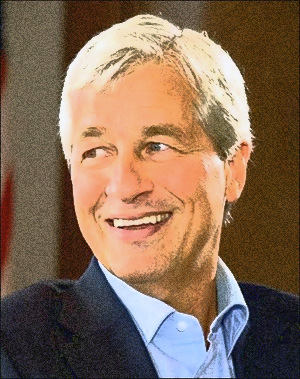Courtesy of Pam Martens
During the financial panic of 1907, John Pierpont Morgan corralled the money men of New York together and convinced them to join him in bailing out teetering financial institutions in order to calm the panic in the markets. His plan worked.
Flash forward to today. Jamie Dimon is Chairman and CEO of the bank that bears John Pierpont Morgan’s name: JPMorgan Chase. The bank is the largest federally-insured bank in the U.S. with $1.6 trillion in deposits. It has more than 5,000 bank branches across America accepting the life savings of moms and pops. But JPMorgan Chase is also the largest trading and derivatives house on Wall Street – a dangerous, combustible mix as it proved so well in 2012 when it lost $6.2 billion of depositors’ money making wild gambles in derivatives in London.
On Tuesday of this week, instead of offering words to calm markets in the midst of a panic over the global spread of the coronavirus, Dimon revealed to reporters that his bank planned to start tapping the Federal Reserve’s Discount Window for loans – an unthinkable strategy for a bank endlessly promoted by Dimon as having “a fortress balance sheet.” Adding to market concerns, Dimon told Reuters’ reporters that his bank would be borrowing from the Discount Window “against a range of securities and loans” as collateral.
There is an age-old stigma attached to borrowing from the Fed’s Discount Window because it strongly suggests that the bank does not have adequate liquidity of its own to meet depositor demands for withdrawing cash. Typically, the Fed requires government-guaranteed securities as collateral for Discount Window loans. Dimon’s reference to providing “a range of securities and loans” as collateral for its Discount Window loans from the Fed sounds eerily similar to what the Fed did at the height of the financial crisis of 2008.
Because banks were reluctant to borrow from the Discount Window during the financial crisis because of the fear of being tainted as insolvent, the Fed created the Primary Dealer Credit Facility (PDCF). The Fed then proceeded, over more than two years, to make $8.9 trillion in secret cumulative loans to the trading houses on Wall Street. In many cases, it accepted junk bonds and stocks as collateral – at a time when both were in freefall.
…




